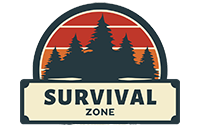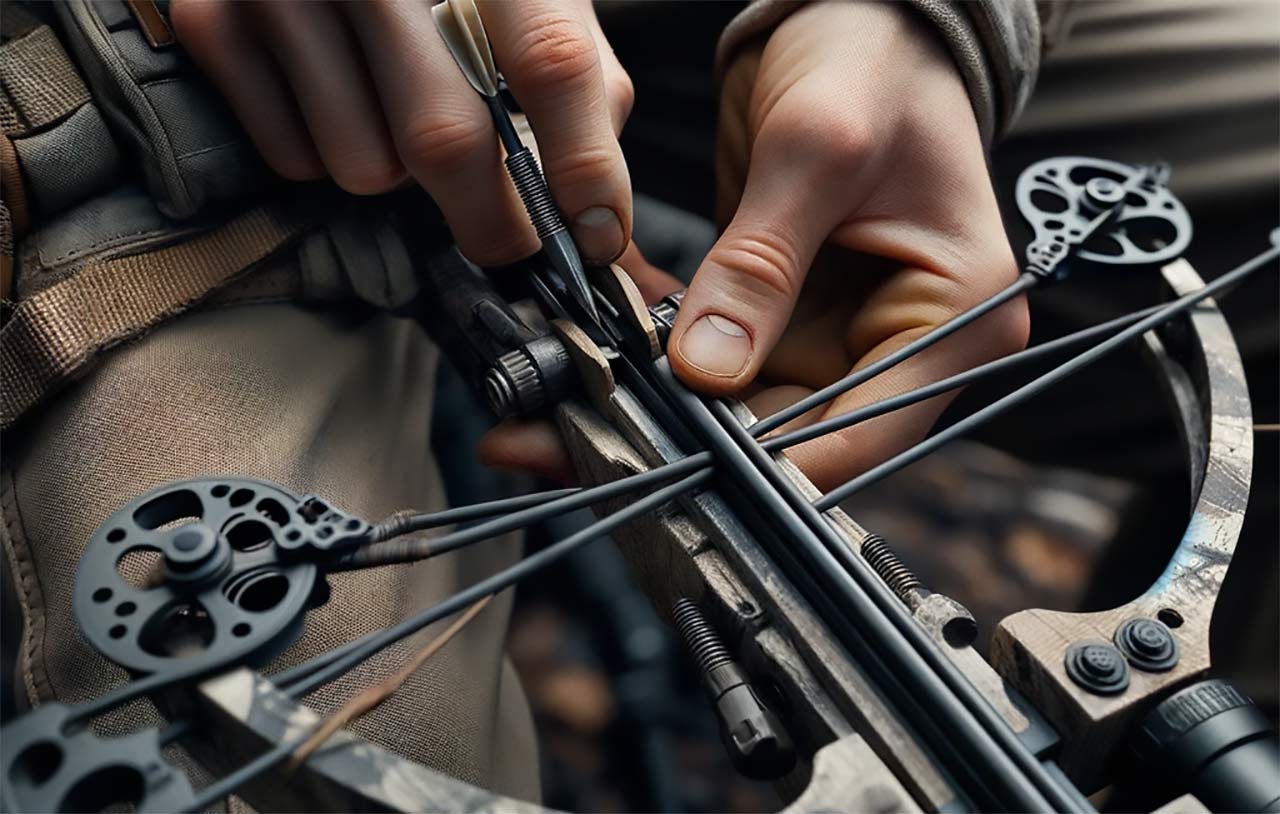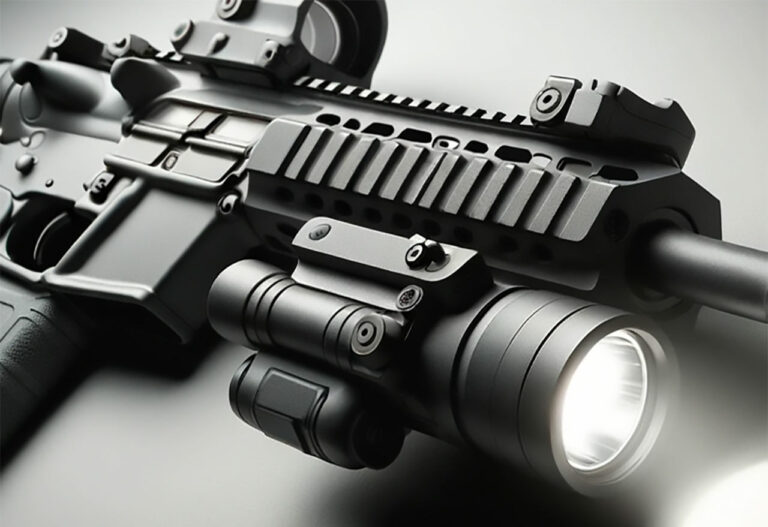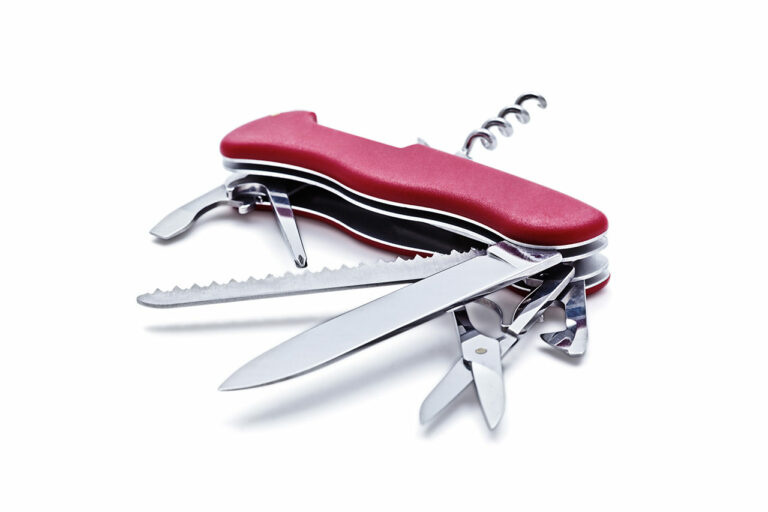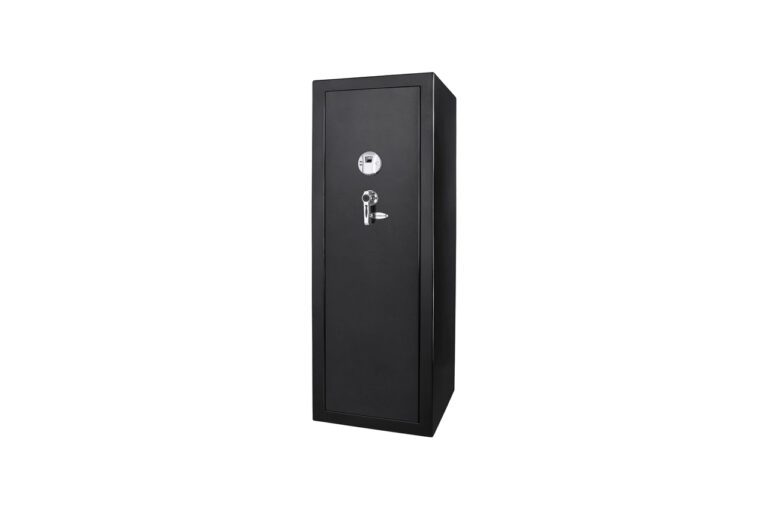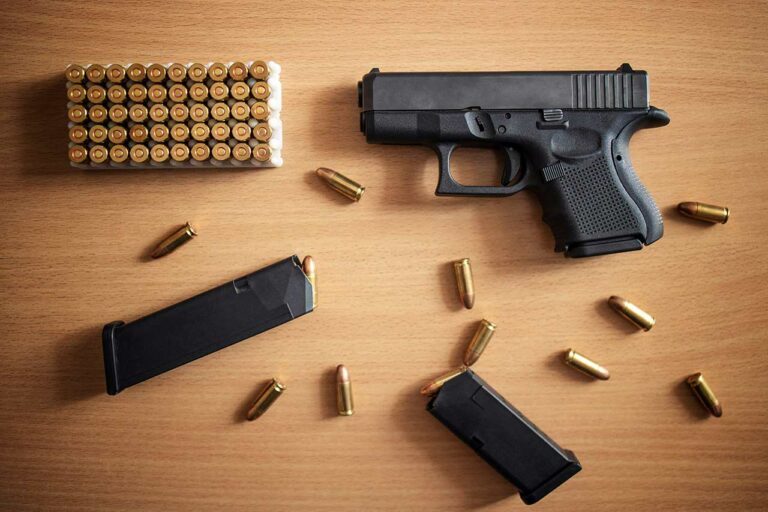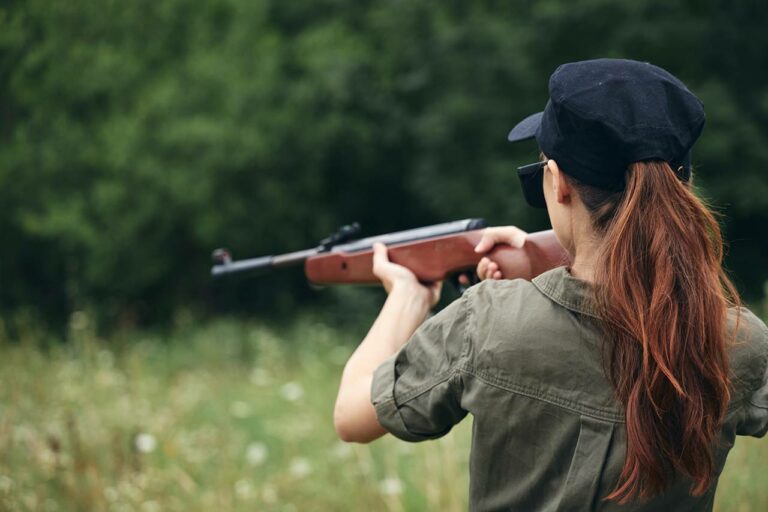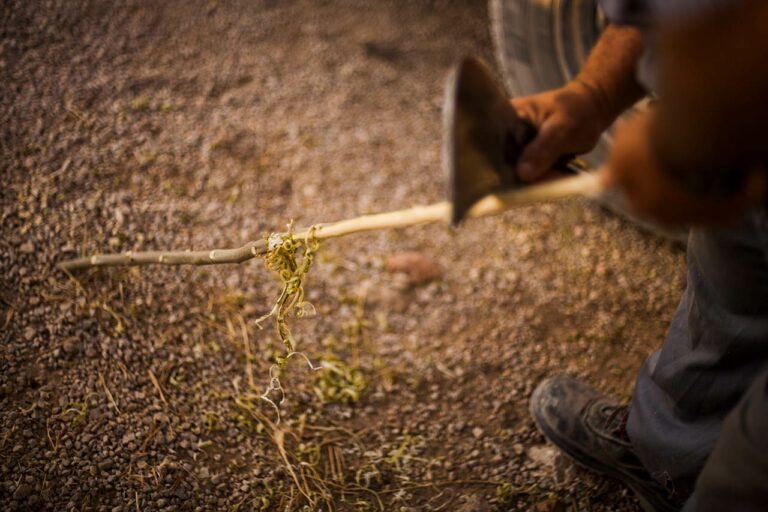How To Load A Crossbow (Tips For Quick And Safe Setup)
Crossbows have gained immense popularity in the hunting and archery world, for good reason. They offer a unique combination of power, accuracy, and ease of use that appeals to both experienced hunters and those new to the sport.
Before you can enjoy the benefits of using a crossbow, it’s crucial to understand how to properly and safely load one.
While it might seem tricky at first, with a bit of practice and the right technique, you’ll find loading your crossbow quickly becomes second nature. So, let’s get started on mastering this essential skill.
Safety First
Before you even think about loading your crossbow, focus on safety. These basic safety guidelines will ensure you’re handling your crossbow correctly and will help prevent accidents.
Know Your Bow’s Features
First up in crossbow safety, make sure you’re familiar with your crossbow’s safety features. Engage the safety mechanism before attempting to cock the crossbow. This will prevent accidental discharge while you’re loading.
Inspect Your Bow
Next, give your crossbow a thorough visual inspection. Check for any signs of damage or wear that could affect its performance. Damaged limbs, strings, or other components can lead to inaccurate shots, or worse, malfunctions that could be hazardous.
Watch Your Hand Placement
When loading your crossbow, never put your fingers or other body parts in the path of the string. This is especially important during the cocking process. If the string is accidentally released, it could cause serious injury.
Never Dry-Fire
Dry-firing means releasing the string of your crossbow without an arrow loaded. This can cause significant damage to your crossbow, and it’s also a significant safety risk. Always make sure there’s an arrow in place before pulling the trigger.
Work on Technique
Maintain accuracy in your shots by practicing proper shooting techniques with your crossbow. Ensuring you have a stable stance and strong grip on the crossbow will not only increase accuracy, but will reduce the chance of accidents. Taking the time to learn and practice proper shooting techniques will pay off in both safety and performance.
Identifying the Crossbow Parts
Before you can load a crossbow, it’s essential to familiarize yourself with its basic parts and functions. This will not only help you understand how to load and operate the crossbow effectively, but will ensure your safety while doing it.
Bowstring
The bowstring is the strong, flexible cord that connects the limbs of the crossbow. It’s responsible for transferring the energy from the limbs to the arrow or bolt, propelling it forward when released.
Limbs
These are the long, curved arms of the crossbow that store energy when the bow is drawn. There are two types of limbs – recurve and compound. Recurve limbs have a more traditional curved shape, while compound limbs use a system of cables and pulleys to generate force.
String and Cables
The string and cables are essential components of compound crossbows. They work in concert with the limbs to store energy and provide a powerful, consistent draw weight.
Rail
The rail, also known as the flight groove, is the track on which the arrow or bolt rests as it’s fired. This component ensures the arrow remains in proper alignment during the shot.
Trigger
Just like on a firearm, the trigger of a crossbow is responsible for releasing the stored energy in the limbs, propelling the bolt forward.
Bolt or Arrow
The projectile fired from a crossbow is called a bolt or arrow. Bolts are specifically designed for crossbows, featuring a shorter and stiffer body compared to traditional arrows.
Nock
The nock is the small groove at the end of the bolt that holds it in place on the bowstring. It helps to ensure proper alignment and prevent the bolt from slipping off the string during a shot.
Quiver
The quiver is a container designed to hold your arrows or bolts while on the move. It’s important to have a secure quiver that ensures easy access to your projectiles when needed.
Fletching
Fletching refers to the vanes or feathers at the back of a bolt, typically arranged in a radial pattern. These provide stability and improve accuracy by ensuring the bolt maintains a straight flight path.
String Wax and Serving
To prolong the life of your crossbow, you should take care of your bowstring by applying string wax. The serving is a protective layer on the bowstring where it interacts with the crossbow’s rail and nock. Regularly waxing this area helps reduce wear and tear, ensuring your equipment remains in peak condition.
Now that you know the essential parts of a crossbow, you’re ready to learn how to load and use it safely.
Cocking the Crossbow (Loading Techniques)
There are a few techniques you can use to ensure a safe and efficient process while loading a crossbow.
Hand Cocking
This method involves pulling the bowstring back by hand until it sits comfortably in the latch. While this is the simplest way to load a crossbow, it can be difficult depending on the draw weight and type of crossbow you’re using. Make sure to keep your fingers away from the flight deck and danger triangle to avoid injury.
Rope Cocking Aid
A rope cocking aid is a useful tool that can help you load the crossbow more easily by reducing the force needed to pull the bowstring. To use this device, attach the hooks to the bowstring and pull the handles back evenly until the string is locked in place. This technique ensures a consistent and accurate shot, as well as reducing stress on your arms and shoulders.
Cranking Devices
Some crossbows come with built-in cranking devices or offer them as accessories. These devices make it easier to load a crossbow by using a crank handle to pull back the bowstring. It’s essential to follow the manufacturer’s instructions for using these devices to avoid damaging your crossbow or injuring yourself.
When loading a bolt on a crossbow, ensure the fletching is properly inserted into the flight groove and the nock is slid under the arrow retention spring. Always keep the crossbow pointed in a safe direction while loading and never put your finger on the trigger until you’re ready to shoot.
Using a Crank Device
Crank devices are a great way to keep things simple and efficient when it comes to loading a crossbow. They can make the cocking process easier and faster, especially for those with limited arm strength.
To use a crank device with a crossbow:
- Attach the crank handle to the crank socket. This is typically a square hole or slot on the crossbow’s stock, near the butt pad. Make sure it’s secured in place to avoid any mishap during use.
- Place the hooks of the crank on the crossbow string, ensuring they are evenly spaced from the center of the string. The hooks should catch the string securely, preventing any slippage when you start to crank.
- Begin turning the crank handle. This will start pulling the string back toward you, causing the crossbow limbs to flex and store energy. As you crank, you’ll feel the tension increasing – this is normal. Continue cranking until the string locks into the trigger mechanism, which will indicate the crossbow is fully cocked.
- Gently remove the hooks from the crossbow string, being careful not to disturb the cocked position. Finally, remove the crank handle from the crank socket and store it in a safe place for future use.
Positioning the Arrow
Before you position the arrow on your crossbow, make sure you’ve already cocked it and are ready to load the bolt. Now, let’s proceed with positioning the arrow.
First, grab an arrow from your quiver. Make sure you’re using the proper type of arrow for your crossbow, typically called a bolt. The fletchings (the little wings at the back) and nock (a small groove at the end) should be in good shape. If they’re damaged, it can affect your shot accuracy.
Place the arrow on the flight groove, which is a track found on the top of the crossbow stock. The nock should be in contact with the bowstring, and the fletchings should be aligned with the groove.
Note: Many crossbows have a specific orientation for the fletchings; ensure the odd-colored fletching (also known as the cock vane) is facing downward or in the designated groove.
Once you’ve place the arrow on the flight groove, double-check that the nock is properly seated and engaged with the bowstring. This is crucial, as an improperly seated arrow might not fire correctly or could even damage your crossbow.
Now, your arrow is in position, and you’re ready to aim at your target. Remember, safety first. Only point the crossbow in a safe direction, and keep your fingers and hands away from the string path.
Frequently Asked Questions
Can you leave a crossbow loaded for extended periods?
It’s not recommended to leave your crossbow loaded for an extended period of time. Doing so can cause unnecessary stress on the limbs, strings, and other components of your crossbow, which could potentially lead to damage and failure. Always unload your crossbow when it’s not in use to maintain its longevity and performance.
What are the differences between recurve and compound crossbow loading?
Recurve and compound crossbows differ in their mechanisms and the way they store energy. Recurve crossbows have a simpler design, with limbs that curve away from the shooter. To load a recurve crossbow, you’ll need to pull the string back manually or with the assistance of a cocking device until it locks in place. Because of their simpler design, recurve crossbows usually require less maintenance.
Compound crossbows use a system of pulleys or cams to assist in the loading process, making it easier to draw the string back. This system provides a mechanical advantage, allowing for greater power and accuracy. Loading a compound crossbow typically involves using a cocking device, such as a rope cocker or crank cocker, to smoothly and consistently pull the string back into place.
How does the cocking device affect the loading process?
Cocking devices aid in the loading process by making it easier to draw back the crossbow string. They help reduce the amount of force required, ensuring a consistent and even draw. There are two main types of cocking devices: rope cockers and crank cockers.
A rope cocker is a simple and affordable device that typically reduces the draw weight by 50%. It consists of a rope with handles on either end and hooks that attach to the crossbow string. By placing your foot in the stirrup and pulling upwards on the handles, you can evenly and consistently draw the string back.
A crank cocker is a more advanced device that attaches to the crossbow’s stock. It uses a crank system, which can significantly reduce the amount of force required to cock the bow. This is particularly useful for individuals with limited physical strength or for those who want a consistent draw regardless of fatigue levels. Just keep in mind crank cockers tend to be more expensive and add weight to the crossbow.
